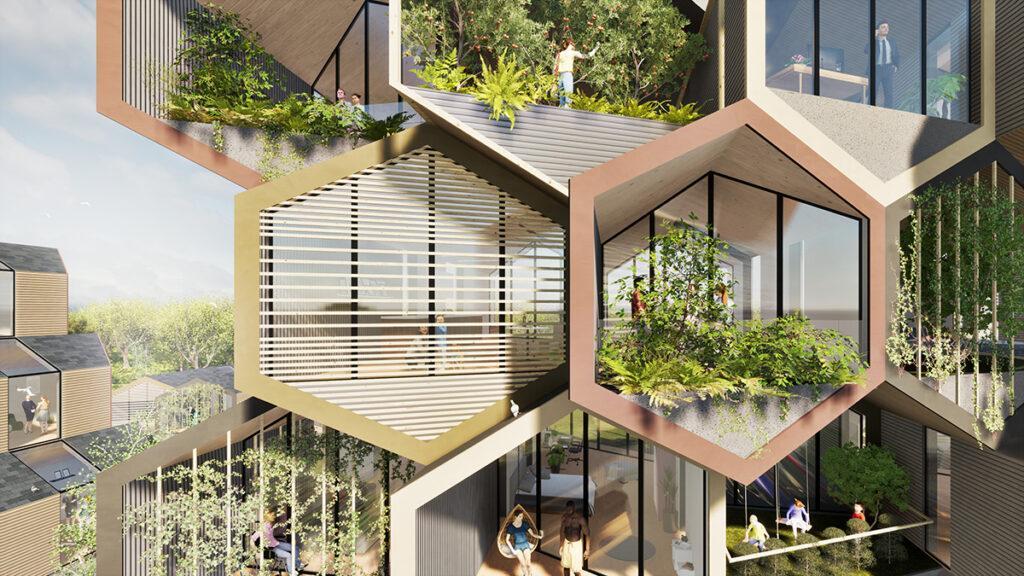Table Of Content

As with many aspects of beekeeping, there are numerous options available when choosing a Langstroth hive. These relate to longevity, handling, strength, aesthetics, costs, and other factors. The bottom line is that for many beekeepers, it is very important to raise the hive off the ground, whether through their own solution or via a commercial product. Beyond the core components of the hive, many beekeepers add one or more options.
7 Plans by LSU AgCenter
However, the absence of frames means honey harvesting relies on the crush and strain method. These are the three most popular hive designs, but every style has pros and cons! It is up to you to decide which type of beehive best suits your goals and management style. Closely follow plan directions if you choose to build your own bee hive of any style. Improperly built bee hives result in wayward comb, difficult inspections, and angry bees (and soon, stung beekeepers).
The Honey Cow
These hives are equipped with solar panels that harness the power of the sun to provide energy for various hive functions. From powering ventilation systems to operating hive monitoring devices, solar energy offers a clean and efficient alternative to traditional energy sources. Another way to prevent swarming is by managing the colony’s population. Regular inspections and monitoring of the hive can help beekeepers identify signs of swarming, such as the presence of queen cells.
Installing Frames and Foundation

The Observation Hive is another bee hive design that allows beekeepers to observe their bees up close without disturbing the colony. It is essentially a small section of a larger hive that contains a clear or glass panel through which the bees can be observed. Observation hives are typically used for educational purposes, scientific research, or simply for the enjoyment of watching the bees at work.
Beekeepers should take precautions to prevent bees from becoming a nuisance or posing a threat to neighbors. This includes regularly monitoring hive health to prevent swarming, which can lead to the bees venturing further from the hive in search of a new home. Additionally, providing a water source specifically for the bees can help prevent them from seeking water from neighboring properties. A well-ventilated hive allows for the exchange of air, helping to regulate temperature and humidity levels.
There are various philosophies on the use of queen excluders and many beekeepers simply never use them. In fact, because they do slow down worker bees – those very bees that are creating honey! – the queen excluder is sometimes mischievously called a “honey excluder”.

Size
It is 40 pages of step by step instructions to build this hive. The plans break down each section so even those that are newest to beekeeping and carpentry work could probably figure out how to build these hives without much fuss. Lifting supers filled with honey can be dangerous for your back. When working with the stacked boxes, you may find yourself bending a lot when inspecting the brood boxes.
HIIVE beehive: a necessary redesign of an outdated concept - DesignWanted
HIIVE beehive: a necessary redesign of an outdated concept.
Posted: Sat, 04 Sep 2021 07:00:00 GMT [source]
The choice of frames and foundation depends on personal preference and the specific requirements of the beekeeper. Honey supers are additional boxes or compartments added to the bee hive specifically for the storage of honey. These supers are placed on top of the brood boxes, which are where the queen bee lays her eggs and the worker bees take care of the developing brood. The purpose of honey supers is to provide the bees with extra space to store surplus honey.
Unlike traditional vertical hives, the horizontal design allows bees to build their comb in a linear fashion, mimicking the way they would in the wild. This method has gained popularity among beekeepers for its simplicity, ease of management, and potential benefits to the bee colony. The top bar hive is the oldest hive design in the world. A horizonal top bar hive features wooden bars that are laid along the top of the long box.
The parts generally include an outer cover, inner cover, several boxes of of different depths (supers), a bottom board and hive stand as noted here. The bee hive box is the main structure that houses the colony of bees. It is important to build a sturdy and well-designed box to ensure the safety and productivity of the bees. The Langstroth hive (pictured below) is the most common style in use today and a favorite for new beekeepers.
This DIY Beehive caters to these stingless bees that are smaller than the honey bee and live in colonies but do not sting. Once they build a new comb, they also concentrate on having brood in the new comb. Every few years, I like to change the comb in the brood box, which helps to eliminate any dissolved chemicals in the wax.
Horizontal hives, especially top bar and Layens, are incompatible with standard honey extractors. As a result, beekeepers must resort to the crush and strain method, which, while feasible for hobbyists, can be time-consuming for those with multiple hives. The singular box design of horizontal hives means fewer parts are required compared to the multi-box Langstroth hives. On the other hand, horizontal hives spread outwards, requiring more ground space. But they offer the advantage of easier management and potentially healthier bee colonies. Managing a horizontal hive is relatively straightforward.

No comments:
Post a Comment